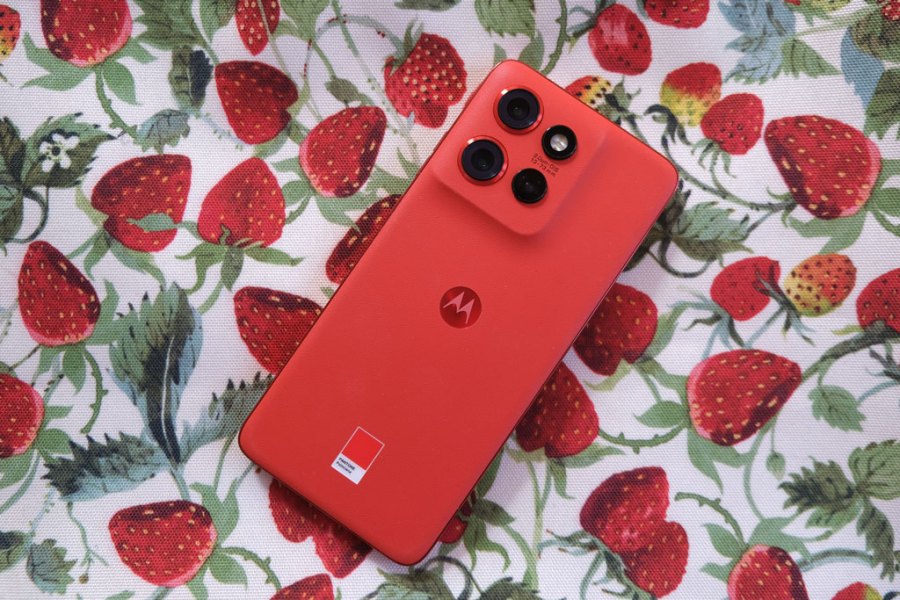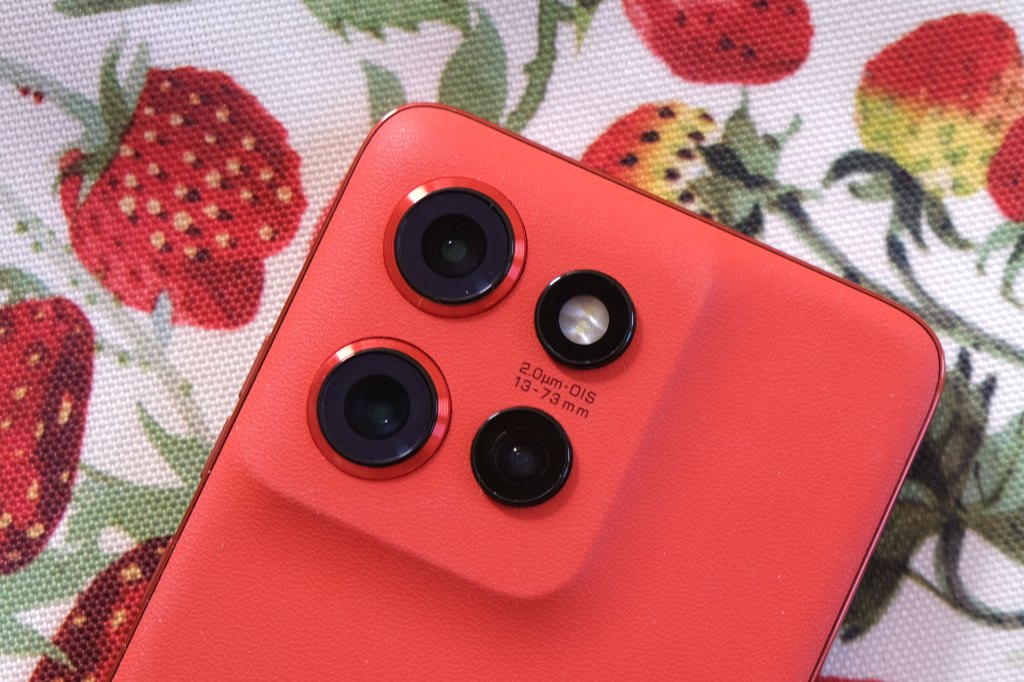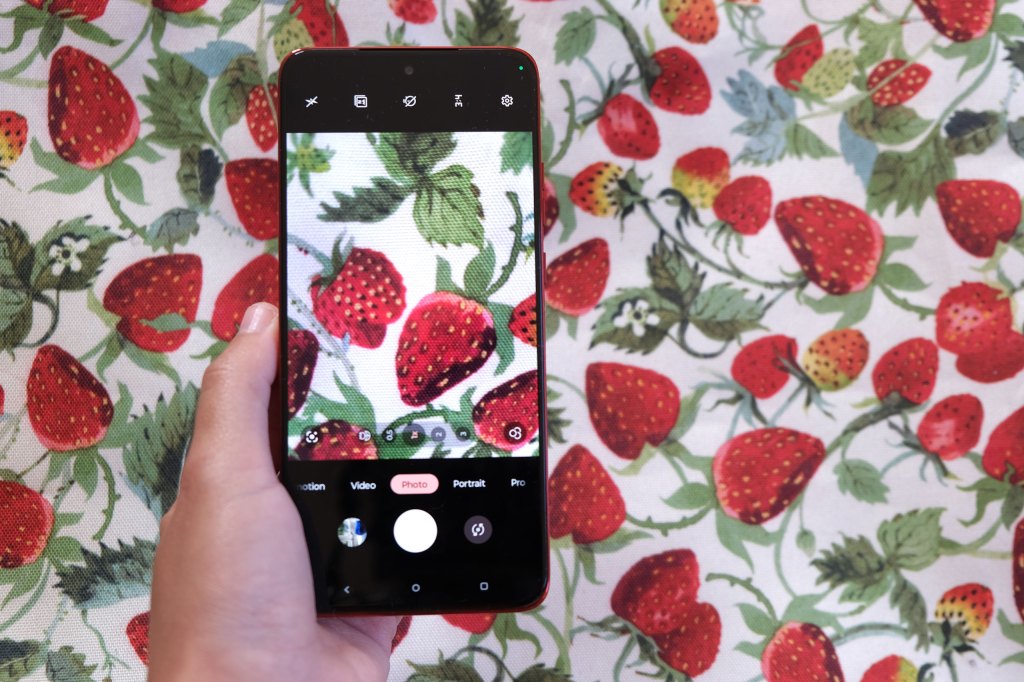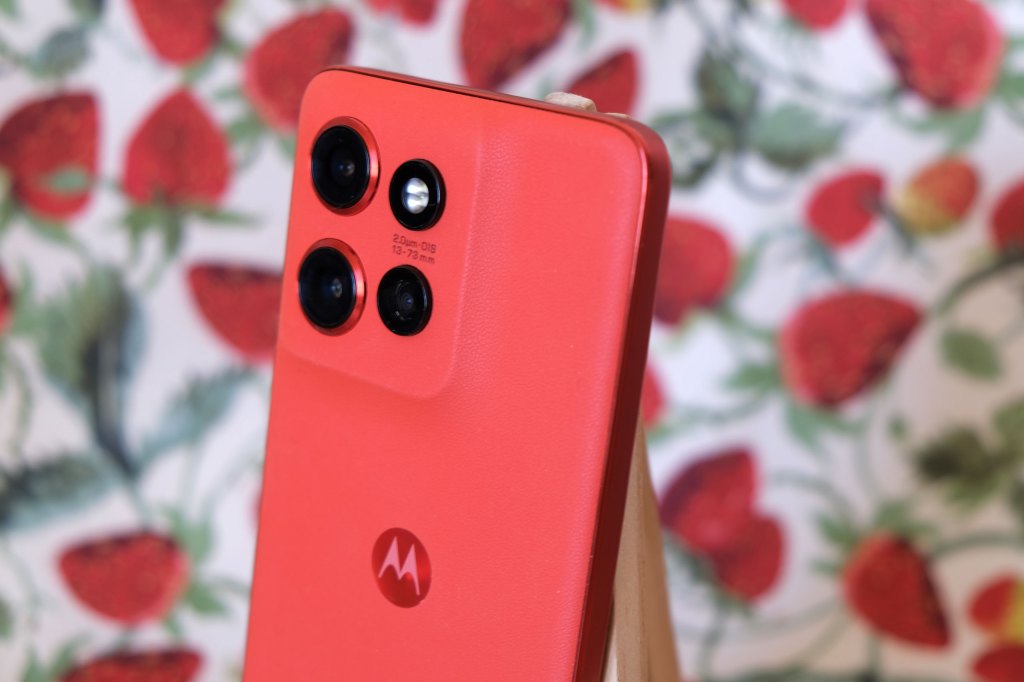The Motorola Edge 50 Neo is a budget phone that follows Motorola Edge 50 Ultra, Motorola Edge 50 Pro and Motorola Edge 50 Fusion. It builds on last year’s Motorola Edge 40 Neo, adding a telephoto camera and doubling down on what made the 40 Neo a good budget option: its low light capabilities.
Amateur Photographer verdict
An improvement on its predecessor, this is a very nice budget phone that excels in low light and portraiture.- Good low light and portrait capabilities
- Great value for money
- Very pretty design and colour options
- Has a decent telephoto camera
- Photos sometimes come out with oversaturated colours
- Detail rendering can be too much for some
- Poor ultrawide camera
Key features at a glance
- 50MP main camera, f/1.8 with OIS and Quad PDAF
- 13MP ultrawide, f/2.2 with PDAF
- 10MP telephoto, f/2.0 with OIS, PDAF and 3x optical zoom
- 32MP selfie camera, f/2.4
- 6.4-inch screen, 120Hz with 3000nit peak brightness
- IP68 water/dustproof rating
- 4310mAh battery
- 12+512GB, Android 14
- 154.1 ×71.2 × 8.1 mm, 171g
How we test camera phones
We review smartphones from the perspective of choosing one for its photography and camera performance. We look at what the Motorola Edge 50 Neo offers, and the features included for photography and video, paying particular attention to the cameras on the phone, photo editing capabilities, as well as the output from each different lens.
Features
The Motorola Edge 50 Neo’s camera system is mostly the same as the Motorola Edge 40 Neo’s. Similarly, it has a 50MP main camera with OIS and f/1.8 aperture, a 13MP ultrawide camera with f/2.2 aperture, and a 32MP selfie camera on the front with an f/2.4 aperture. Unlike the 40 Neo, the 50 Neo gains a 10MP telephoto camera with OIS, a f/2.0 aperture, 3x optical zoom and 30x superzoom.
In the camera app, you can find a Portrait, Pro modes as well as Night Vision. Additionally, the phone can shoot using a Macro Mode as well as panoramas and photos with a tilt shift.
In terms of video, the 50 Neo can record up to 4K video at 30fps. Moto AI enhancements have been incorporated for video recording with Adaptive Stabilisation.
Handling and design
This phone comes in the following Pantone colour options: Poinciana (red), Grisaille (grey), Lattè (light brown) and Nautical Blue (blue) – all with a vegan leather finish. The phone I received to review was the Pantone Poinciana colour option, which is basically the colour of Aperol Spritz.
As with the pink Google Pixel 9 Pro, it is very nice to see smartphones coming in different colours and I grew to really appreciate the red colour. The phone is slightly smaller than the 40 Neo, which will likely make it a good option for those who prefer smaller phones.
It is powered by a MediaTek Dimensity 7300 chipset and has IP68 water and dust rating. Its 6.4” pOLED display has a 120Hz refresh rate. It also runs on Android 14 and comes with 68W fast charging. In terms of storage, the device has up to 512GB of storage and up to 12GB of RAM.
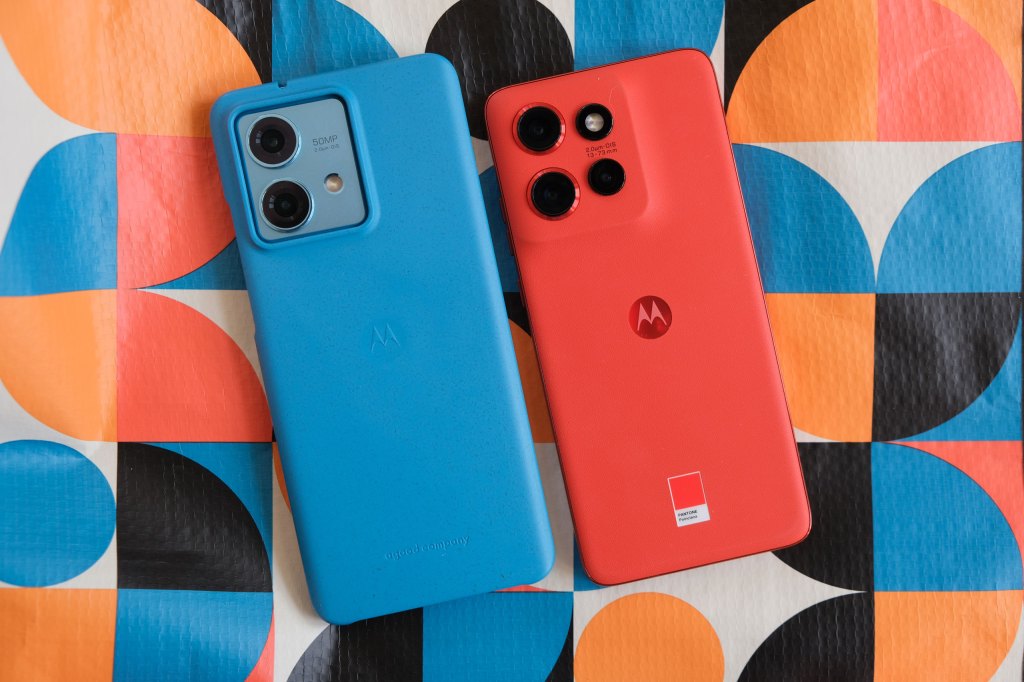
Image quality and performance
Overall, the Motorola Edge 50 Pro performs well, particularly the main camera.

Disappointingly, just like with the 40 Neo, colour and detail rendering is sometimes overdone. My images were over sharpened to the point where they appeared fake.
This can be a problem with the other cameras but ails the ultrawide camera in particular. Blue skies and greenery also tended to come out oversaturated even when the phone was set to Natural mode instead of Auto-enhance mode.
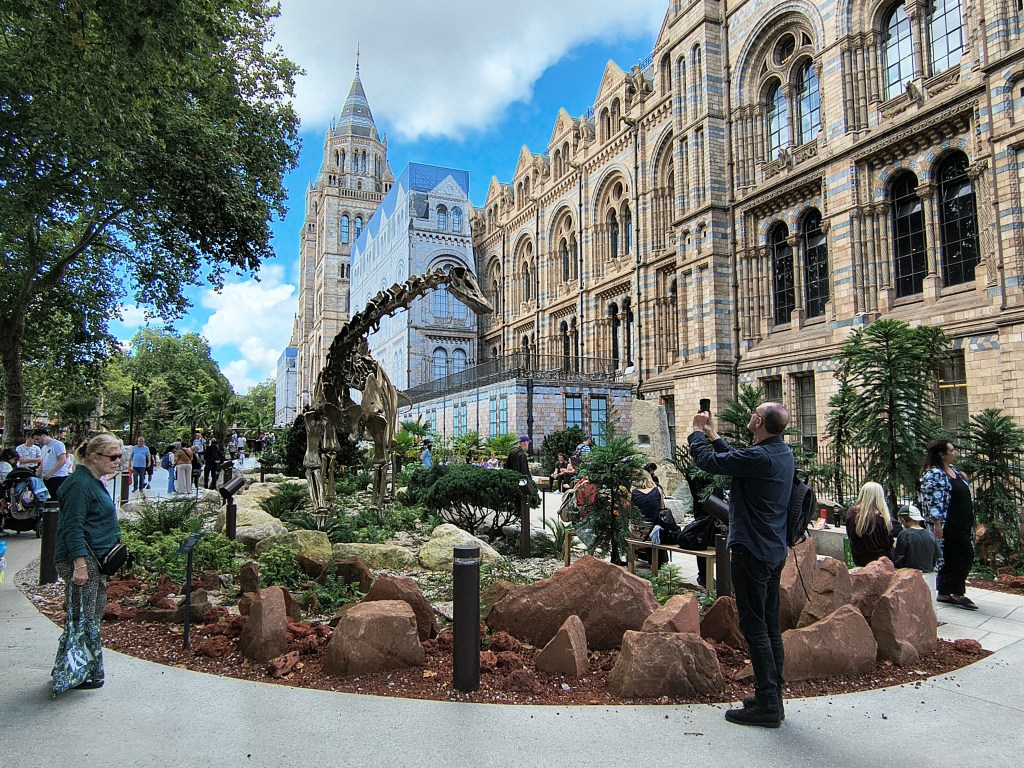
It felt like a game of Russian roulette. I either got beautifully vibrant colours or horribly oversaturated colours.
The phone’s Macro mode uses the ultrawide camera, which has phase detection auto focus (PDAF). While photos taken with it are usually brighter, more detailed, and have more contrast than photos taken with the main camera, they are also colder.


The telephoto camera was not amazing and struggled when zooming in past 3x and at capturing movement (a walking fox was rendered blurry, along with its surroundings) but it did its job.
Low light performance is really where this camera shines. I managed to get brightly lit results, whether I was inside a roller-skating rink, the V&A museum, and even a photography exhibition held in a dark room. Cloudy days were easily conquered too.
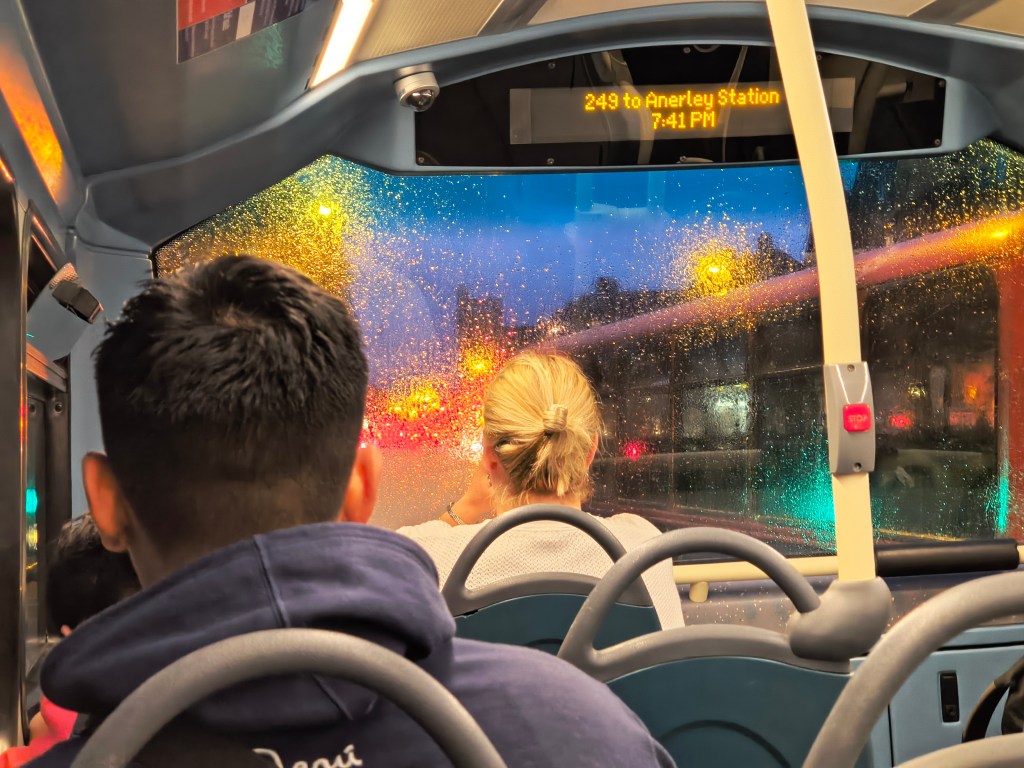
The 50 Neo did not tackle nighttime as easily as it did other low light situations but for the most part, I also got brightly lit images, even without Night Vision, which mostly helped brighten up the sky.
The selfie camera also did well, though it does not have autofocus and struggled when the subject was too close to the camera. Holding it slightly more at arm’s length is the better option if you want your face in focus.

I was glad to find that you can use Portrait mode while using the front camera though it had trouble keeping some of my curls in focus, instead banishing them to bokeh territory.
When using Portrait mode with the rear camera you get to choose between 24mm, 35mm, 50mm and 85mm equivalent focal lengths. Similarly, it produces some very nice, detailed portraits, particularly with the 85mm option (which wasn’t included as an option in the 40 Neo’s Portrait mode).

One thing I noticed when I brought the 50 Pro to a studio photoshoot was a lag between me taking the photo and the phone processing the photo, which made quickly taking several shots in one go difficult. For this review, I brought the 50 Neo with me to a fashion show during London Fashion Week and this wasn’t a problem.
In terms of video, though video can get shaky the more you zoom in, I mostly got some nicely lit, stabilised results with the 50 Neo, even when shooting handheld.
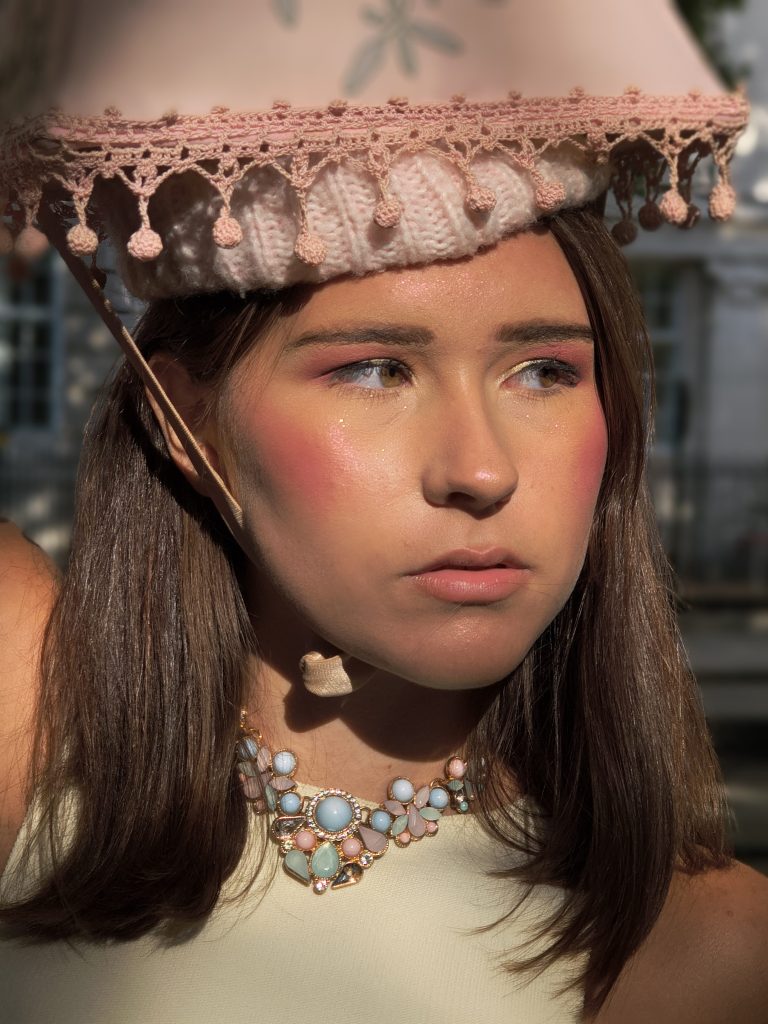
Value for money
The Motorola Edge 50 Neo is now on sale in the UK from the Motorola website and retailers with a starting price of £399.99.

There aren’t many affordable smartphones with a triple camera set up that include a telephoto camera, like the Samsung Galaxy S22, so the 50 Neo stands out and is on the slightly cheaper side when compared to the Galaxy S22’s £465 price point.
If you like shooting portraits on your phone and are looking for good low light performance, the 50 Neo is very good value for your money. If you don’t like overly vibrant colours, there are other options available including the Google Pixel 7a.

The 50 Neo has not been released in the US yet, which is another factor to consider.
Verdict
The 50 Neo’s strength lies in its low light and portrait capabilities, which I was glad to find, are much better than the 40 Neo’s, with the addition of a telephoto camera a great bonus at this price point.

However, while the 50 Neo is an improvement on the 40 Neo, it still has some of the same drawbacks. The ultrawide camera is still best avoided. Colour oversaturation and sharpness being overdone to the point where images look sort of fake was still a recurring problem.
That said, the 50 Neo is still a pretty good choice, and I mostly enjoyed using it.

Related content:
- Best camera phones for photography
- The best budget camera phones
- Best smartphones for low light
- Best smartphones for portrait photography
Follow AP on Facebook, Twitter, Instagram, YouTube and TikTok.

